Golestan Palace in Tehran is one of Iran’s royal palaces, registered in the list of national monuments of Iran, and is open to the public. In all countries with a glorious history of civilization and governance, kings and their entourages have built extraordinary architectural works, and many of these palaces and palaces are still standing. Many palaces have been turned into museums, galleries, hotels, restaurants, or other cultural and recreational uses that need to be restored and protected with better supervision and financial facilities. For this reason, parts of Golestan Palace are open to visitors today as museums. Stay with us to learn more about this beautiful and fantastic palace.
Introducing the historical collection of Golestan Palace
Golestan Palace is one of the unique historical complexes in Iran, with an age of 442 years in terms of historical memory. This complex with this age represents not only an essential part of the art history of this border but also extraordinary events. What happened in it or somehow related to it has become an irreplaceable collection and a living document of the essential part of Iran’s history. This valuable building was registered in the list of national monuments of Iran in 1955 and on the list of UNESCO world heritage in 2013. This palace, with an area of 4.5 hectares, is located in a part of Tehran, a strange part of the city, and its surroundings are full of new and anonymous constructions with different functions.
Thanks to its unique architecture and decorations, Golestan Palace is considered an ideal place for photography and capturing beautiful images. This complex is located in the old context of the city. It can be easily accessed by public transportation and be enchanted by all of Iran’s beauty, history, architecture, culture, and art.
The Golestan complex consists of different parts such as Ivan Takht Marmar, Hall of Salam, Hall of Mirrors, Dining Hall, Khalvat-e Karimkhani, Berlian Hall, Bad-gir Mansion, Shams Al-Emare’ Palace, Almas Hall, and Abyaz Palace. The marble throne porch and the Karimkhani shrine, belonging to the Karimkhan Zand period, are the oldest buildings in the Golestan complex.
The cultural and historical complex of Golestan, apart from the buildings mentioned above, consists of various departments such as the manuscript library, visual documents center, manuscript center, technical office, international affairs, print library, cultural affairs, introduction affairs, child and adolescent unit and A legal office has been formed.
Also, there are many places of interest around Golestan Palace, including the Tehran Bazaar, Haj Ali Darvish Coffee House, Sabzeh Maidan, Nasser Khosro St., Sarai Roshan, Marvi Alley, and Dar al-Fonun.
 Architecture values of Golestan Palace
Architecture values of Golestan Palace
Golestan Palace consists of a historical complex that includes several palaces and royal halls in a garden. The architecture of this complex started with Iranian architecture, and then commercial, political and cultural relations with European countries led to changes and developments based on European neoclassical architecture. For this reason, today, we are witnessing the fusion of Iranian and European architectural styles, which dazzles the eyes of every viewer.
You can see one of the best examples of tile work in the Golestan Palace, with different themes such as mythology, hunting and hunting grounds, hunting, romance, battle and battle, landscape, historical monuments, kings, courtiers and government officials, religious, etc. The effect of expanding communication with the western world and supporting art is also evident in these tile works. Visible volume, shading, and naturalism, which are considered to be the characteristic features of Western painting, have been used along with the traditional methods of Iranian illustration.
This is not the only exterior of the Golestan Palace buildings that amazes you with its beautiful tile work; when you enter these buildings, the eye-catching mirror work will blow your mind. Especially in the Hall of Mirrors, which took more than seven years to decorate.
The gilded decorations on the stone are another part of the charm of Shams al-Amara and the marble throne, which was popular during the Qajar era. The metal sheet is used in these decorations, which shows the skill of the goldsmiths of that time. The use of gold in the architectural decorations of Golestan Palace and attention to its durability doubles the value of this collection. In the following, we introduce the different parts of Golestan Palace.
Different parts of the historical-cultural complex of Golestan
Shams Al-Emare’
Perhaps the flagship of the Golestan collection can be considered Shamsul Emara, A high building that is one of its most prominent attractions and was once a symbol of the capital. Naser al-Din Shah fell in love with their skyscrapers during his European travels and therefore ordered the construction of this building so that he could go to the top with his wives and watch the view of Tehran and its surroundings.
This five-story building was built in 1865 and was the tallest building of its time, with a height of 35 meters. For the first time, metal was used in the construction of Shams-ul-Amara, which was considered an important development in Iran’s construction. In addition to the magnificent facade of Shams-ul-Amara, its interior decorations, from mirroring and painting to plastering, will surprise every viewer.
Takht-e Marmar (Throne of Marble)
Ivan Takht Marmar, or Ivan Dar al-Emare’ or Diwan-Khane, is the oldest historical monument of Golestan Palace from the Karim Khan Zand era. It shines like a gem in the heart of this complex with its beautiful decorations of plasterwork, inlay work, stone carving, inlays, latticework, and mirror work.
The most beautiful part of the porch is the marble throne built by order of Fath Ali Shah. In 1806, he ordered Isfahani masons to make a bed of yellow Yazd marble, which included 65 large and small marble pieces. The design of the bed is like that of Hazrat’s throne
It evokes Solomon in mind, who is on the shoulders of three demons and six angels or humans. In addition to a dragon and two lions, verses from Malik al-Shaara praising Fath Ali Shah are also engraved on this marble throne.
Golestan Palace grounds
Around these structures, in addition to the various buildings that stand out in the Golestan complex, many trees, ponds, and fountains can be seen, which is considered a suitable space for walking and photography. The colorful tiles and the beautiful view of each building are worth visiting the grounds of Golestan Palace.
Dormitory building
The dormitory is one of the newest buildings in Golestan Palace, built in 1970 on Queen Elizabeth II’s visit to Iran. This building has been the residence of kings and presidents for some time and is known as a dormitory. This building is supposed to be dedicated to the royal library of the Qajar period, a collection of the most exquisite manuscripts. This collection includes precious books such as Marqa Golshan, Shahnameh Baistoghri, and One Thousand and Illustrated Nights.
Private palace
On the northwest side of the Golestan Garden, we pass through Karimkhani’s solitude and reach a remarkable palace, which includes five halls called Hall of Salam or Coronation Hall, Ivory Hall, Hall of Mirrors, Hall of Dishes, and Hall of Brilliance.
Benjamin, the first American ambassador to Iran, wrote in the book Iran and the Iranians, which was written between 1880 and 1881: “The tallest part of Naser al-Din Shah’s royal buildings is Salam Hall, which is one of them. The most excellent halls in the world have ceilings and walls decorated with stucco, like the same stucco seen in Alhambra Palace.”
Salam hall
Salam Hall, Museum Room, or Coronation Hall is located on the northwest side of Golestan Palace, which was built to create a museum from the beginning. After seeing the museums of Western countries, Naser-Aldin Shah decided to construct a museum similar to them in this royal citadel. In this regard, the old buildings of this part of the garden were demolished, and the museum room, pond, etc., were built. In this way, the first museum of Iran was formed in Golestan Palace. Interestingly, photography and the creation of a museum in Iran go back to the Qajar era.
The construction of Salam Hall and other parts was completed in 1876. However, the arrangement and installation of panels and the completion of decorations continued until 1878, and it seems that Naseruddin Shah personally participated in the design of the museum layout. Since the Salam ceremony was held in this place, it became known as the Salam Hall, and because of the coronation of the Pahlavi kings, it was also known as the Coronation Hall.
Special museum
The museum is a particular part of Talar Salam pond, which houses the exquisite objects left by the Qajar kings. In the past, some of them were kept in the Naser al-Din Shah museum room, which had been handed over to the Qajars since the past, and were either considered gifts by kings and other artists of their time or were bought by these kings themselves.
Museum Gallery
Another part of the Salam hall pool is dedicated to the gallery museum, which contains Iranian paintings of the Qajar period. This museum consists of two parts: in the southern part, the paintings of the Qajar era are displayed, and the works of artists such as Mirza Baba Naqshbashi Shirazi, Ismail Jalair, Abul Hasan Thani Ali Akbar Khan Mazin al-Dawlah, etc. can be seen. Among them, the northern part has been chosen to display the works of painters of the late Qajar period, such as Mahmoud Khan Saba, Kamal al-Mulk, Masaral al-Mulk, and Agha Mirza Musa. These two departments were converted into one in 1995and started working as a museum gallery in 1997.
Talar-e Ayene (Hall of Mirrors)
Hall of Mirrors is one of the famous halls of Golestan Palace, which is located right next to the Hall of Salam. Most of the hall’s fame is due to the famous painting of Kamal al-Mulk from the Hall of Mirrors and Naser-Aldin Shah, which took five years to build. The exciting thing about this painting is the size of the hall, which looks much bigger than the actual hall, and this shows the painter’s art in making the hall look bigger.
Aaj Hall (Ivory Hall)
Ivory Hall is another magnificent building in Golestan, although the exact date of its construction is unknown. According to evidence, it was built before the Hall of Salam and Hall of Mirrors. The peak of the beauty of this hall can be seen in the watercolor painting of Mahmoud Khan Malik al-Shaara, which he drew from the hall’s exterior in 1869. And according to this painting, the ivory hall had three large sashes, a porch with six columns, and a staircase.
Currently, there are two large elephant tusks in this hall, which can show the reason for the name of the hall. But some believe this place was used for reception and eating in the past.
During the era of Muzaffaruddin Shah, beautiful decorations were added to it. Before this restoration, an oil painting from the mentioned hall was kept in Salam hall. During the time of Naser al-Din Shah, the Berlian Hall was used to store the gifts of foreign kings, and in the Pahlavi era, it was used to hold official court parties.
Hall of dishes
The Hall of Dishes was built in 1344 on the remains of structures from the Qajar era, and as its name indicates, it is used to store and display some of the gifts of the European kings to the Qajar kings. Chinese service related to Napoleon Bonaparte’s wars, Queen Victoria’s jewelry service, Alexander III’s service, Russian Emperor Nicholas I’s service, etc., are among these gifts that are not appreciated.
Khalvat-e Karimkhani (Karim khan Corner)
Karimkhani Khulot is located in the northwest corner of Golestan Palace and is a covered building in the form of a three-door porch with columns, in the middle of which a beautiful pond can be seen. The importance of this building is due to the events of the era of Agha Mohammad Khan Qajar. He pulled out the remains of Karimkhan Zand’s body from its burial place in Shiraz and moved it to this place; Because, at that time, it was where the king passed daily, and by giving Karimkhan’s burial place, he could kick him. During the era of Naser-Aldin Shah, it was turned into a small area called the Karimkhani courtyard, which was used for the king’s rest. With the first Pahlavi coming to power, the bones of Karimkhan were transferred to Qom.
There are two valuable works in the solitude of Karimkhani, which have given it double importance. The tombstone of Naser-Aldin Shah was moved from the shrine of Hazrat-e Abdulazim to the Golestan Palace at the beginning of the Islamic Revolution of Iran. It was finally placed in the solitude of Karimkhani. The image of Naser-Aldin Shah is engraved on this stone with a sword in his hand.
In addition, the marble throne of Fath Ali Shah is also located in this place; Although it was previously in another part of the palace, it was transferred to Karimkhani’s privacy during the second Pahlavi period.
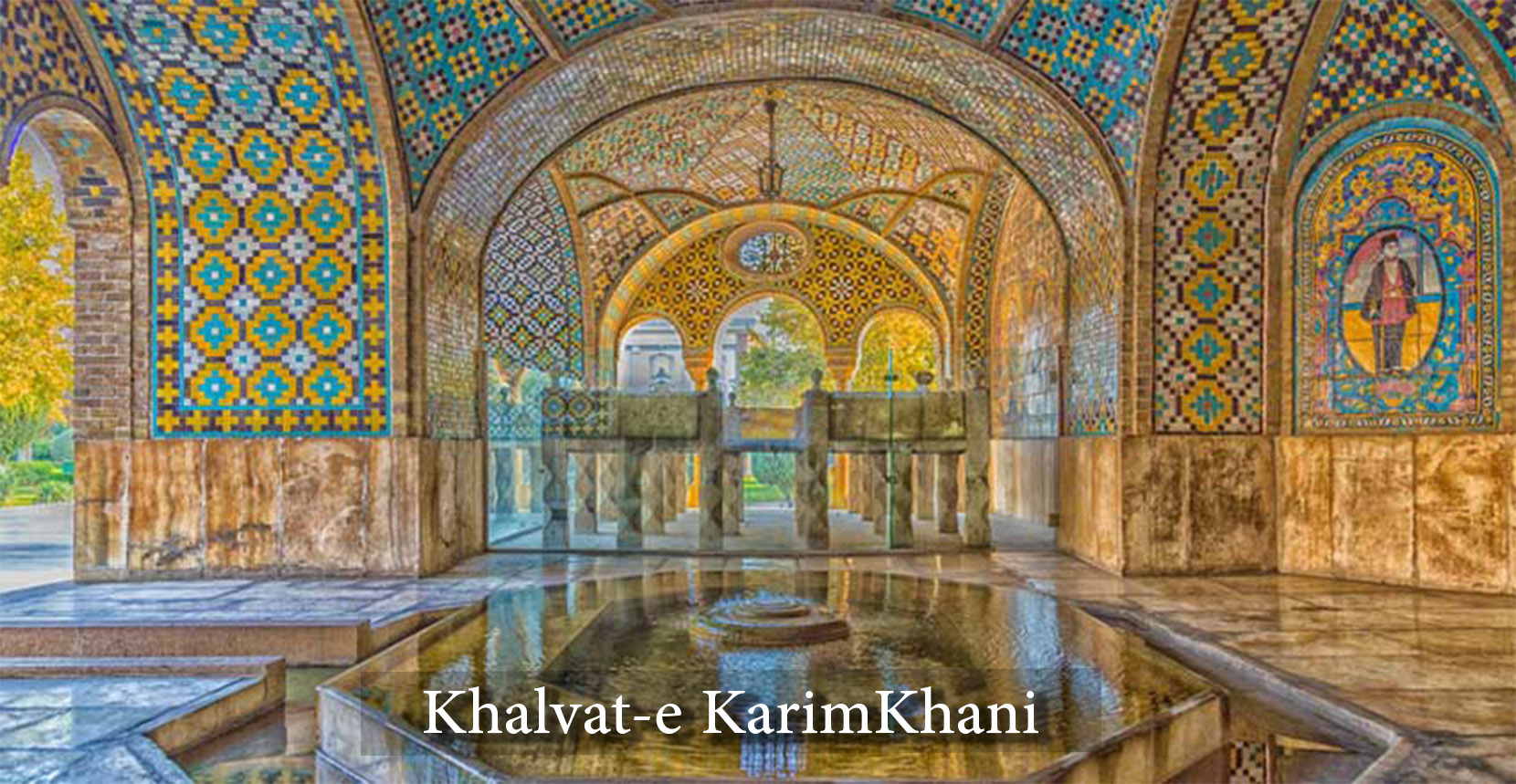
Bad-gir Mansion
Badgir Mansion, located on the south side of Golestan Complex, was built during the reign of Fath Ali Shah and underwent many changes during the era of Naser-Aldin Shah, the result of which we can see today.
In addition to the beautiful sashes and columns, this mansion’s attics, earrings, and vestibules are worthy of attention. Many extraordinary decorations have been used in the Bad-gir mansion, including painting, mirrorwork, plastering, carving, and goldsmithing. The most attractive part of the mansion is the royal hall with nine sashes, carved marble plinths, mirror work, two painted spiral columns, seven-color mosaic flooring, and wall and ceiling paintings that dazzle the eyes of every viewer.
Talar-e Berlian (Diamond Hall)
Almas Hall is one of the old parts of Golestan Palace, located after Bad-gir Mansion, and is called Almas because of its interior mirrorwork. The mirror-worked muqarnas in Ivancheh on the south side of the hall are the remains of the works of Fath Ali Shah, which are the oldest part of this building. This hall was built by order of Fath Ali Shah; However, during the era of Naser-Aldin Shah, there were changes in its decorations and appearance. The said hall is composed of several corridors, lofts, and vestibules; In addition, there is a large pool under this hall.
Abyaz Palace
When Sultan Abdul Hamid, the Ottoman king, sent Naser al-Din Shah some expensive furniture such as Louis XVI steel sofas, two pieces of mirrors, velvet curtains, bronze statues, and some Turkish handwoven carpets; All the king’s palaces were at their peak of beauty and splendor and did not need these devices; Therefore, Naser-Aldin Shah personally designed a new palace in the southwest corner of the Golestan area to house these items. After building this palace, he ordered to paint it white in imitation of European architecture and use white marble for the stairs. For this reason, the new building of Golestan became known as Abyad Palace.
After arranging the belongings of the Ottoman king, this magnificent hall was named Abdul Hamid Hall. Abyez Palace was used as the office of the Prime Minister and the Prime Minister of the following governments and the meetings of the government delegation until it was dedicated to fine arts in 1953 and then to the place of temporary exhibitions. Finally, in 1968, it was turned into an anthropology museum, which, in addition to the clothing of Qajar men and women, also exhibits clothing from different regions of Iran. This museum is considered one of Iran’s most prosperous and oldest anthropological museums.
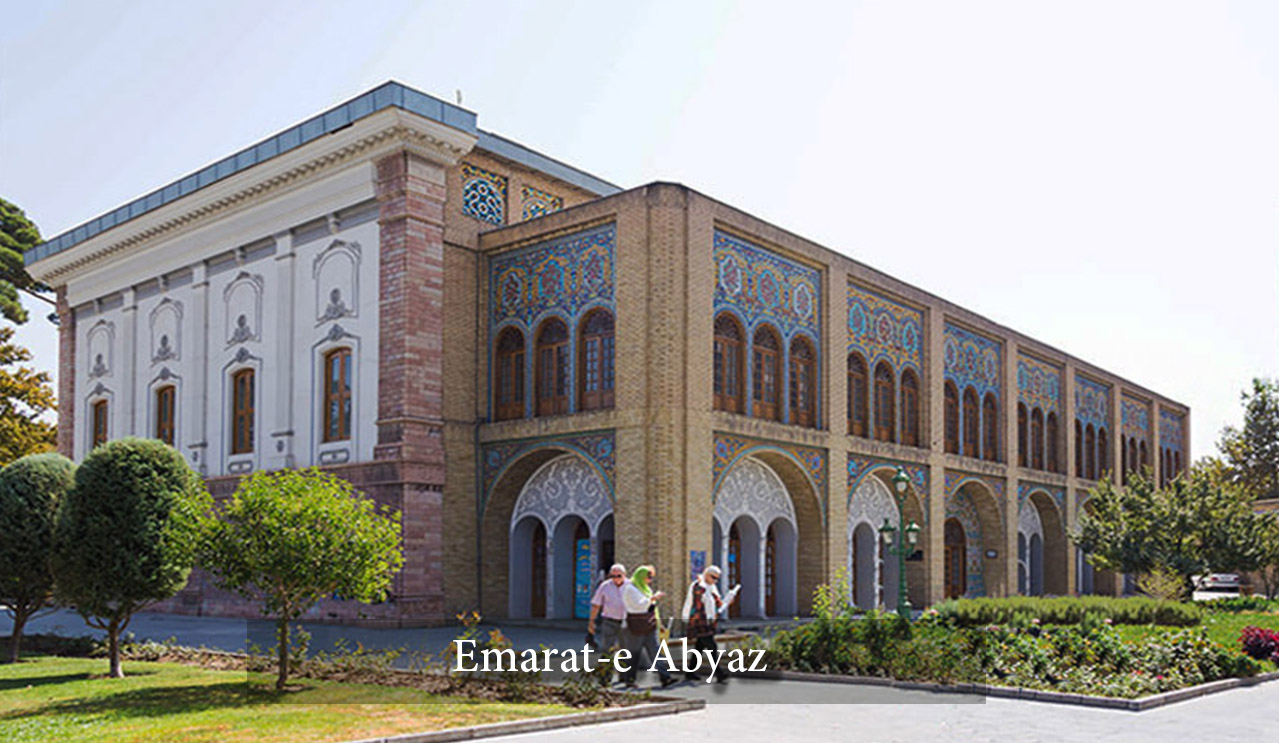
Golestan Palace Library
The library of Golestan Palace consists of two sections: the manuscript library and the printed library:
The history of the library and the treasure of manuscripts go back to the early 19th century AD, which was established by the efforts of Feth Ali Shah Qajar under the name Shahshahi Library. The printing library also started working during the second Pahlavi period, which was initially located on the first floor of the Abyez Palace; Until in 2005, it was moved to a space of 93 square meters on the northeast side of the palace. This library has more than 7,000,000 historical, artistic and lithographic books, of which 2,500 are historical books. Therefore, the library of this palace can be considered the source of Qajar books.
Golestan Palace library is not similar to other public libraries, and it is possible to use it only for students, professors, writers, and researchers by presenting a letter of introduction.
Facilities and services of Golestan Palace
- In addition to the restroom and prayer room, you can use the tea room and its photography department when visiting Golestan Palace.
- Golestan Palace Teahouse
- While visiting the Golestan Palace, you can rest in the tea house and enjoy its aromatic teas or delicious dishes.
- Photography with the mood of the Qajar era
- During your visit to Golestan Palace, visit the photo booth and make a lasting memory by wearing Qajar clothes.
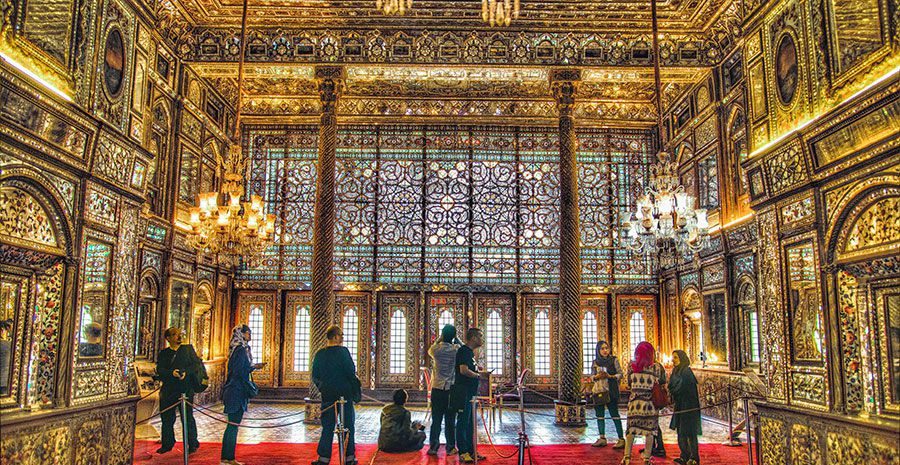


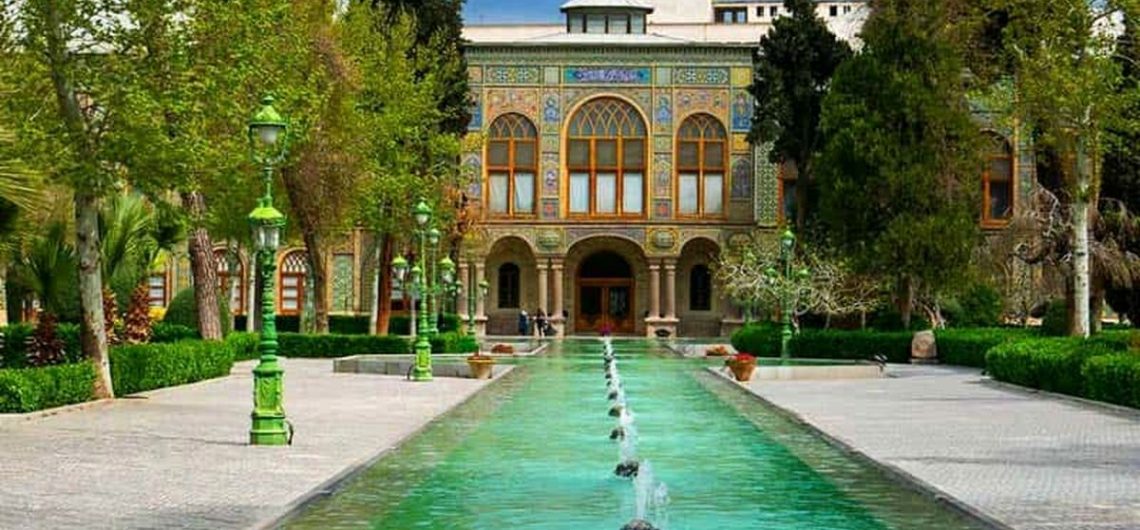
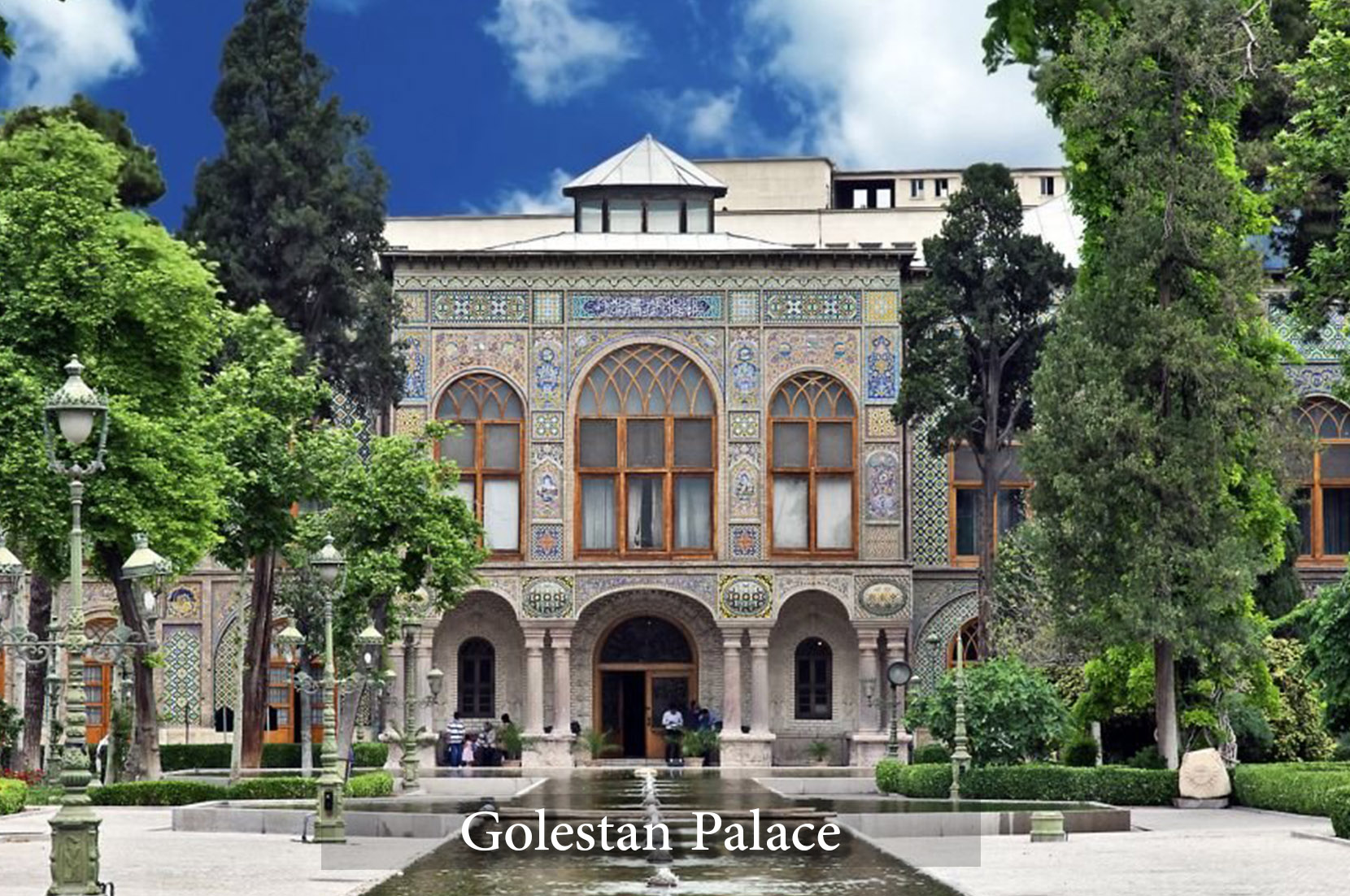 Architecture values of Golestan Palace
Architecture values of Golestan Palace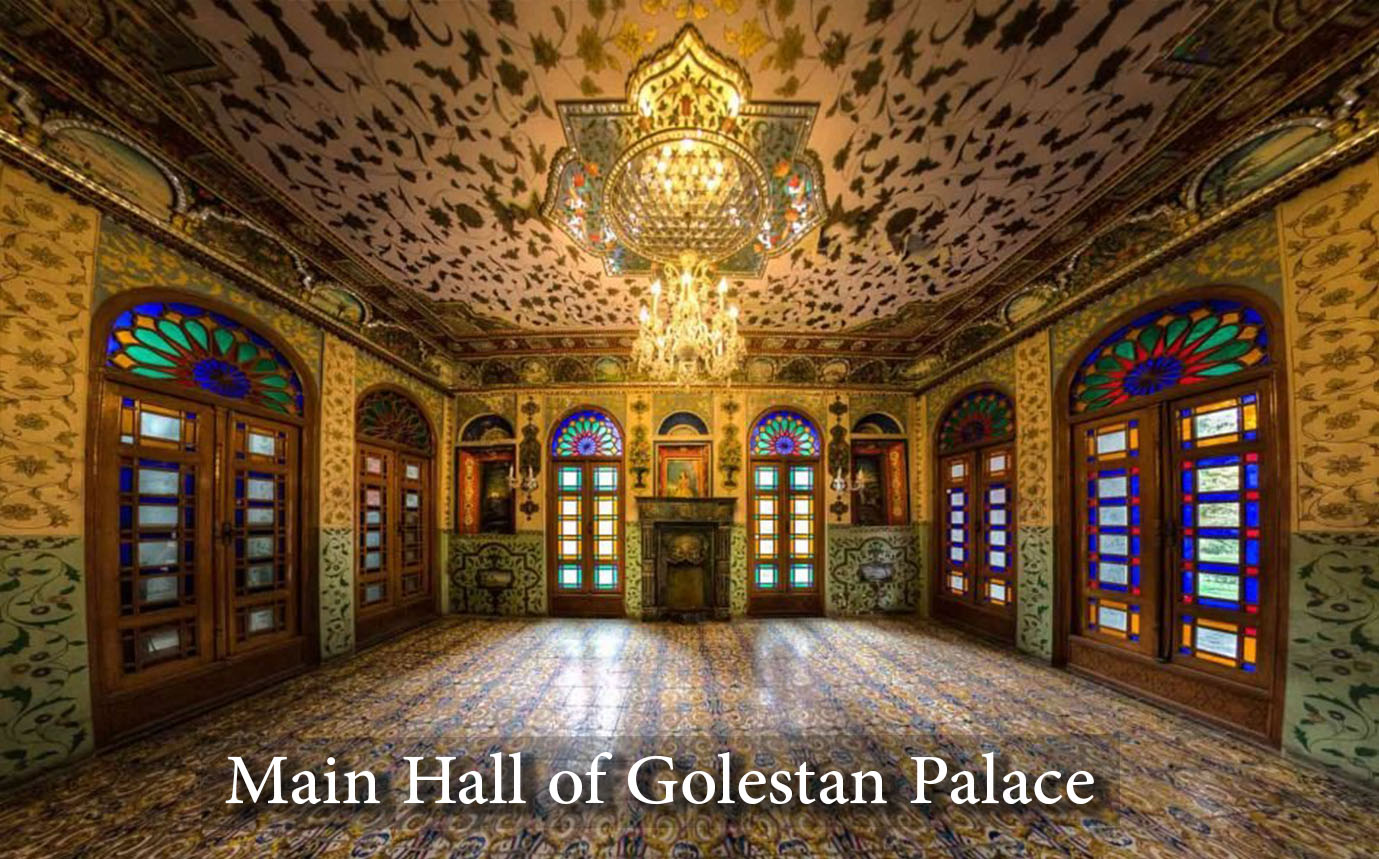
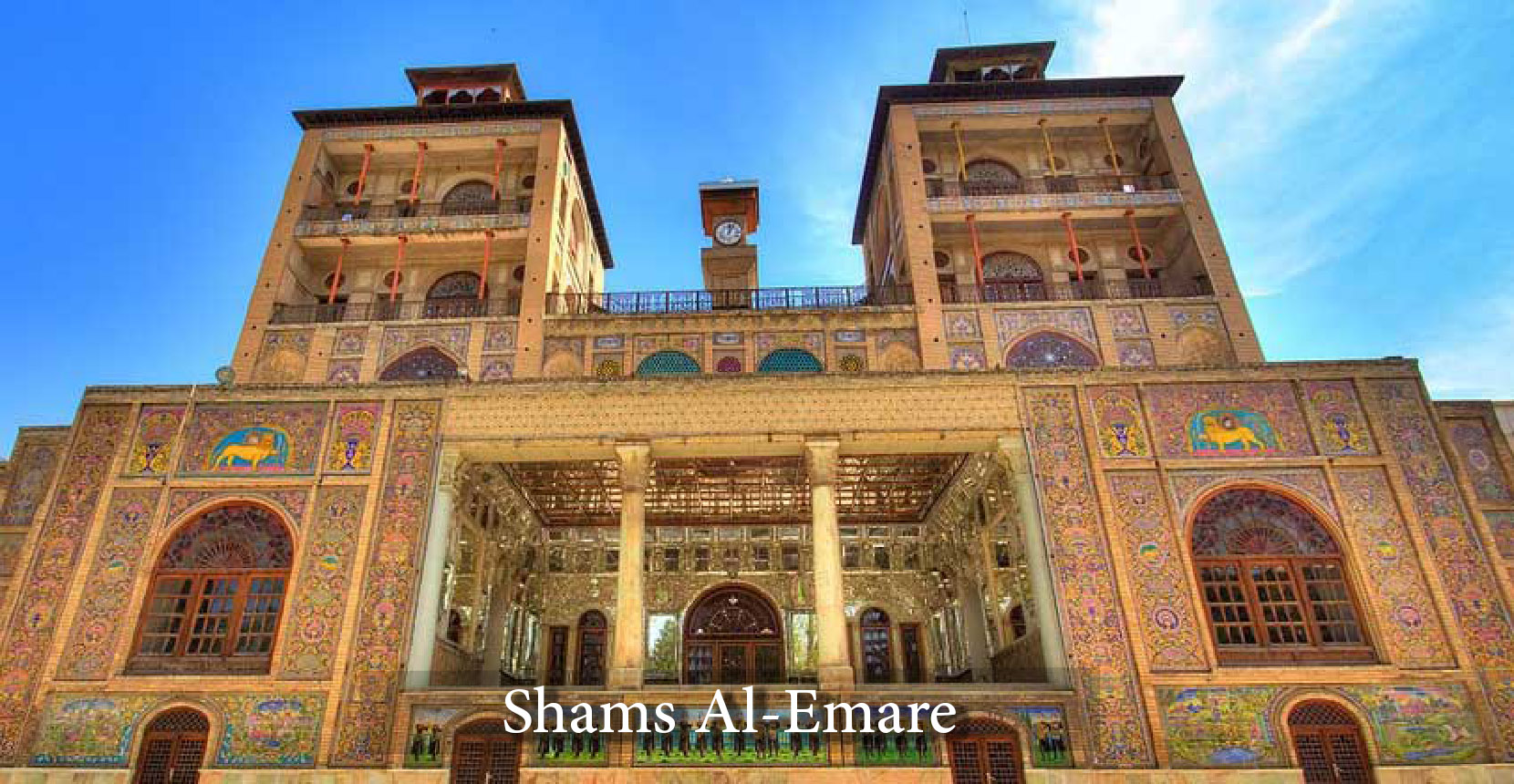
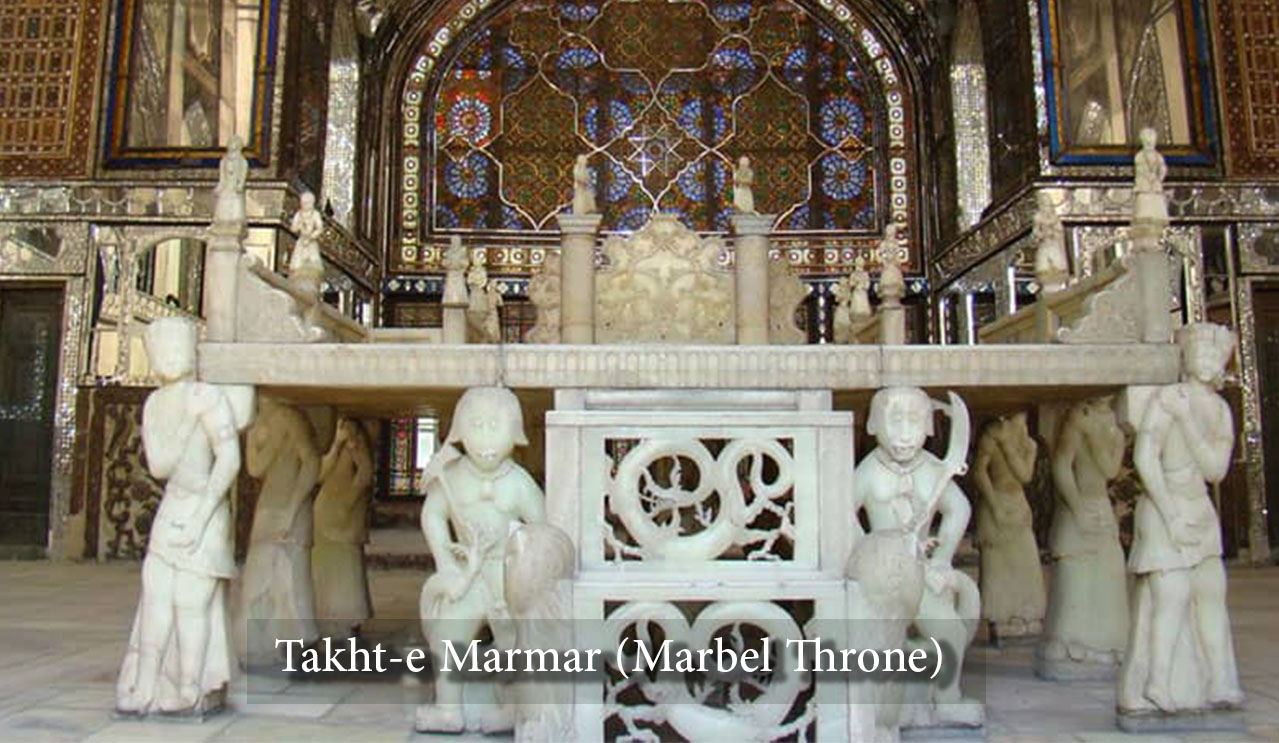
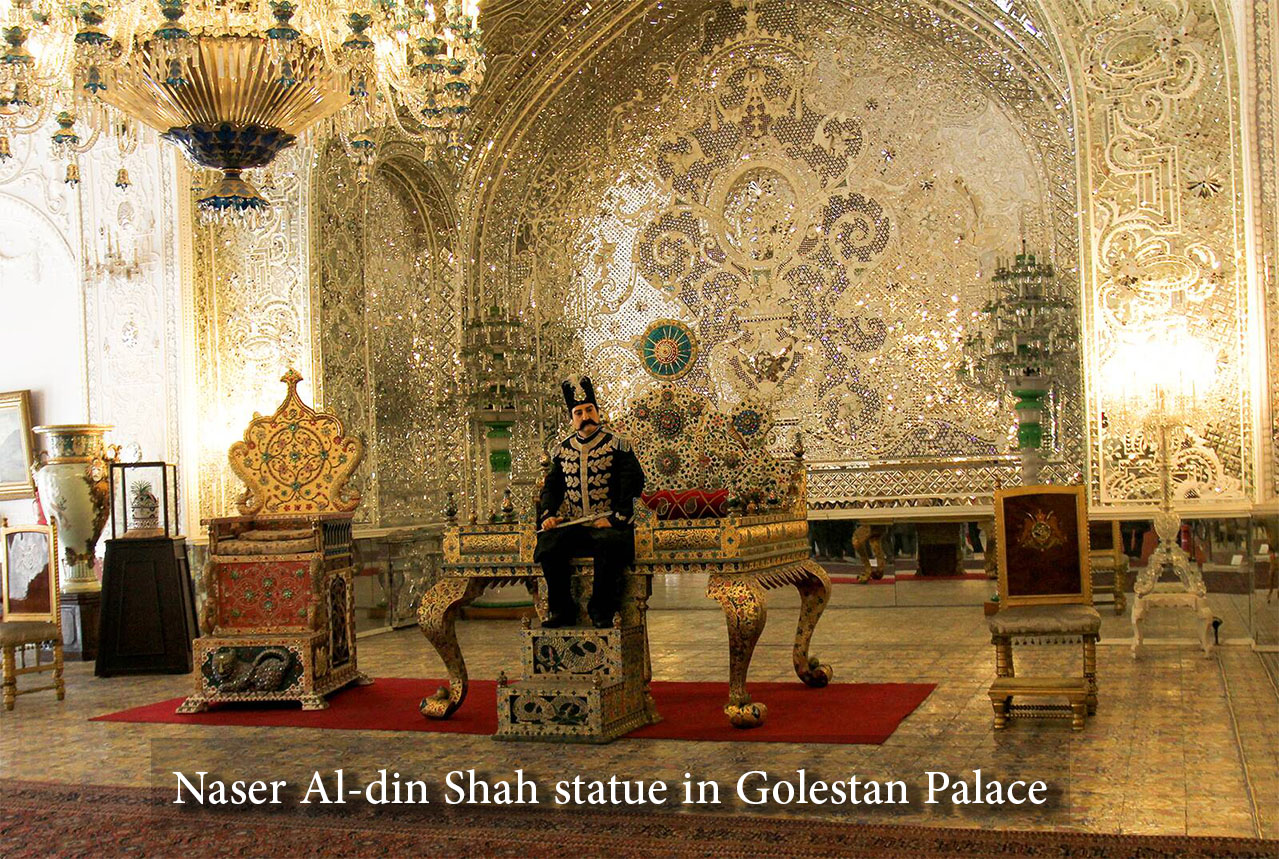
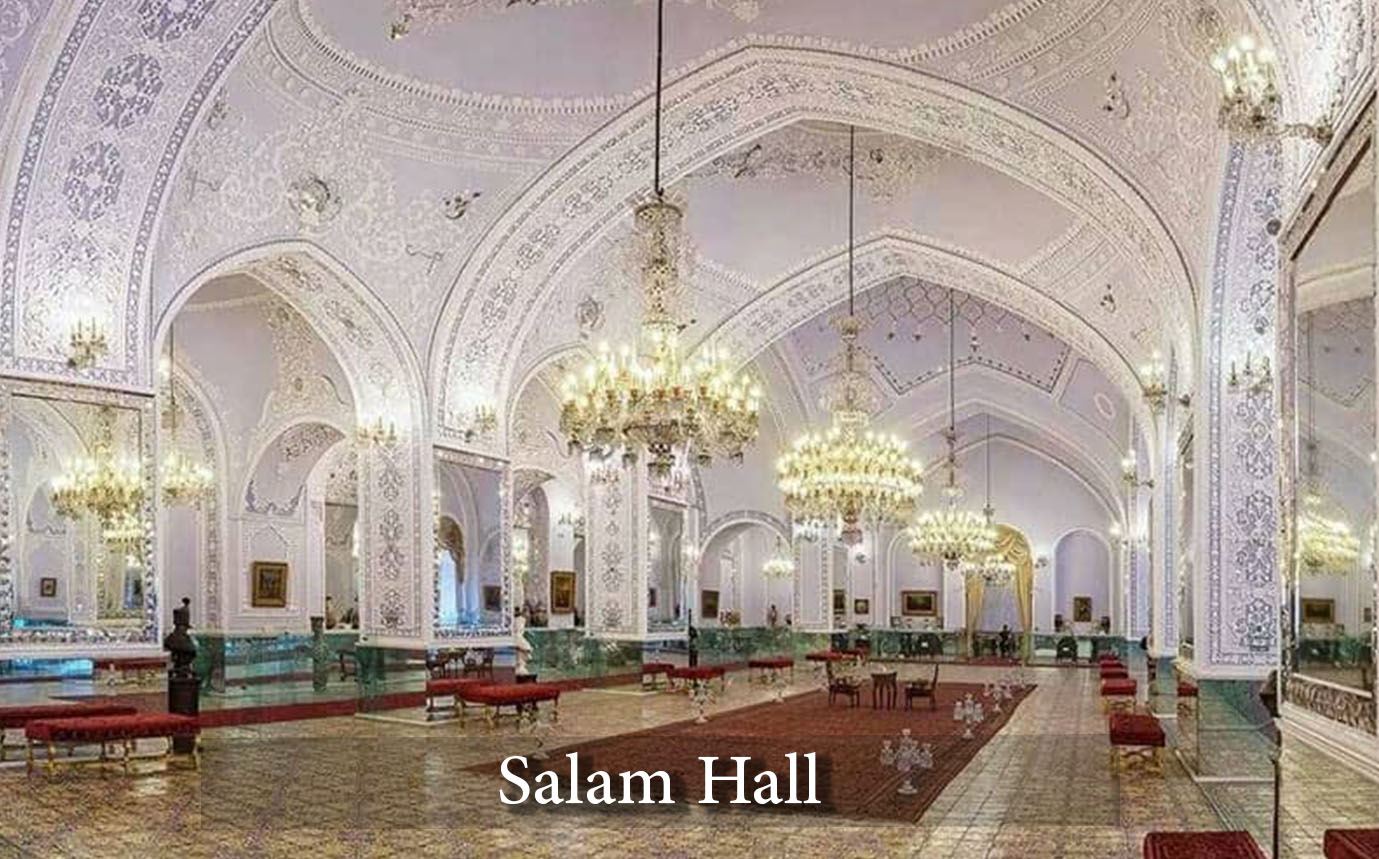
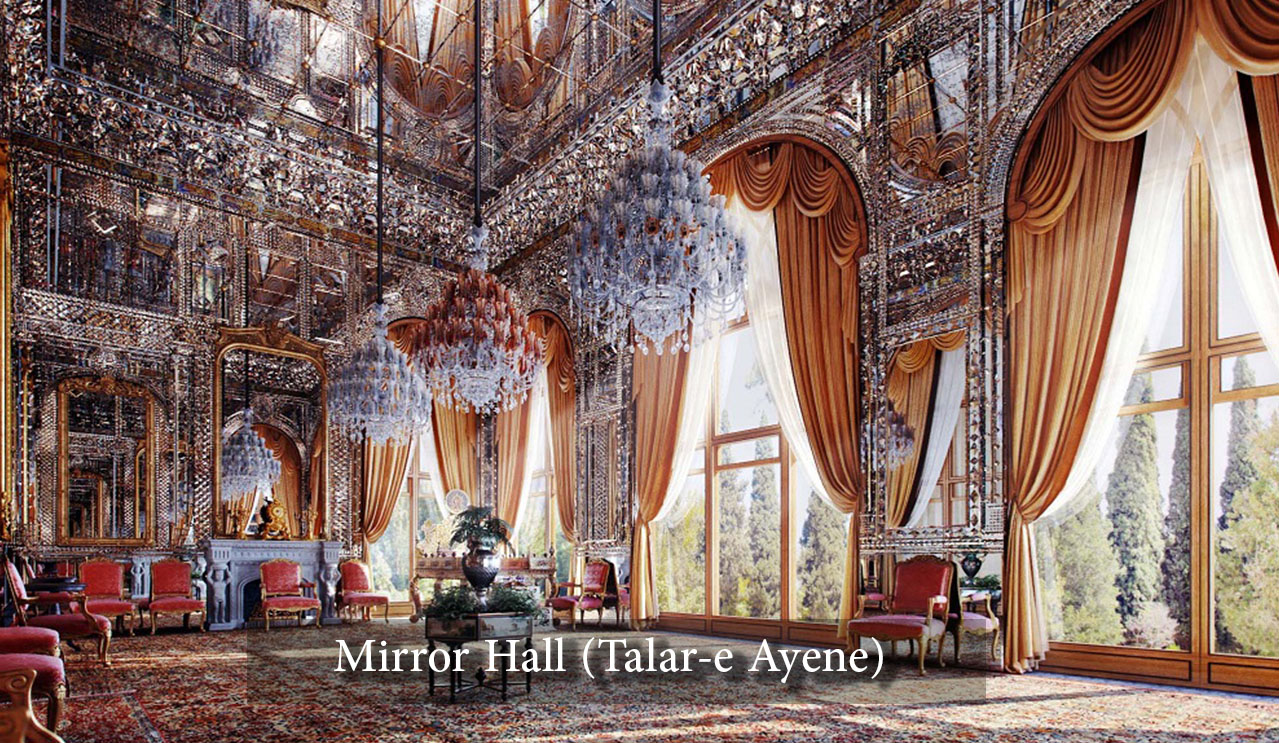
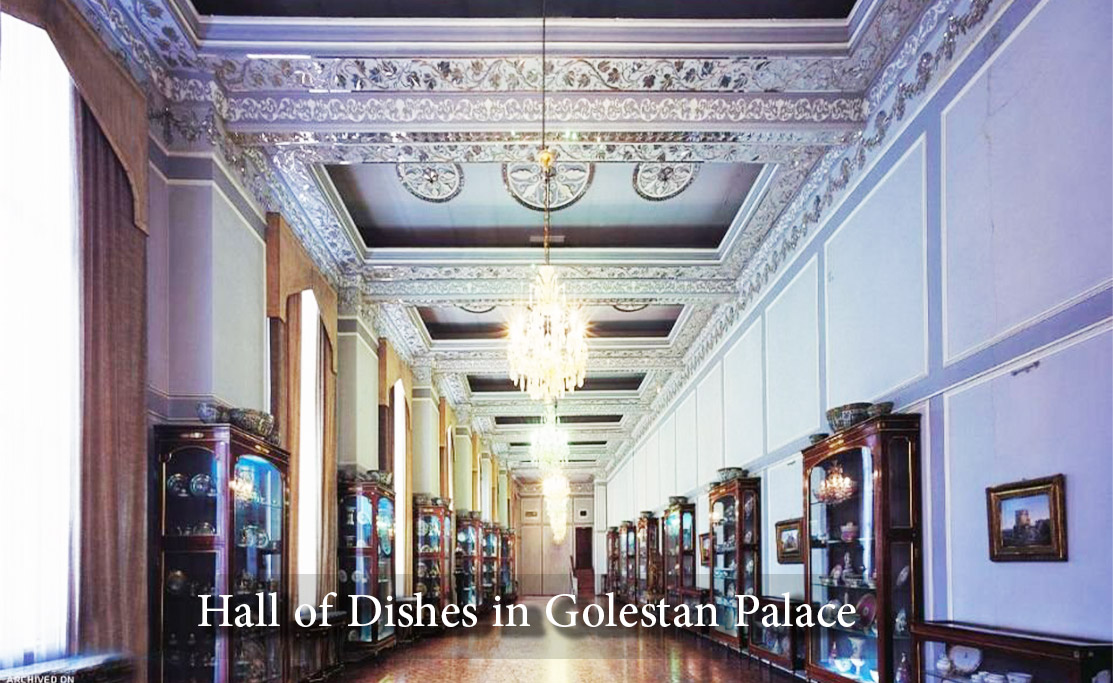
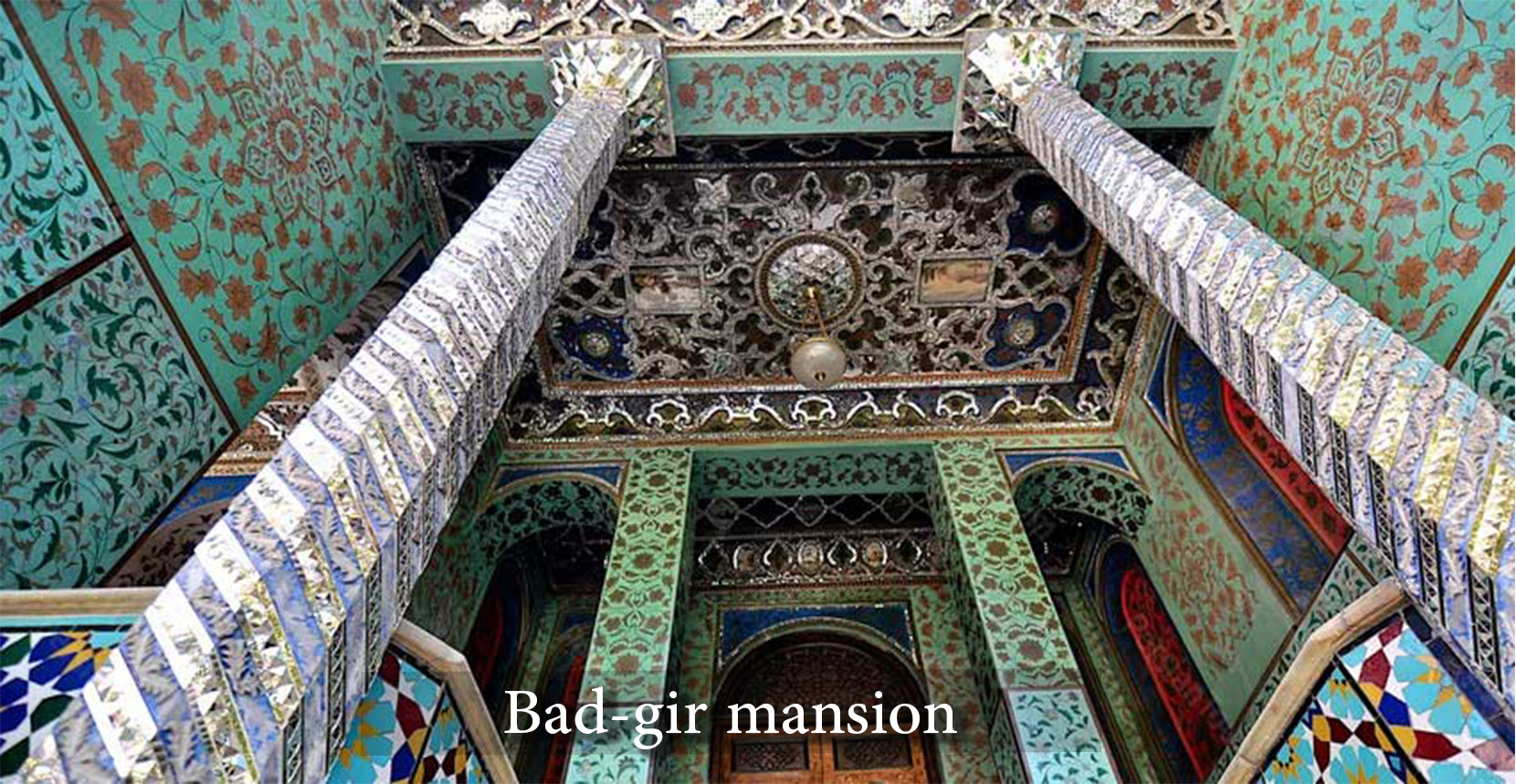
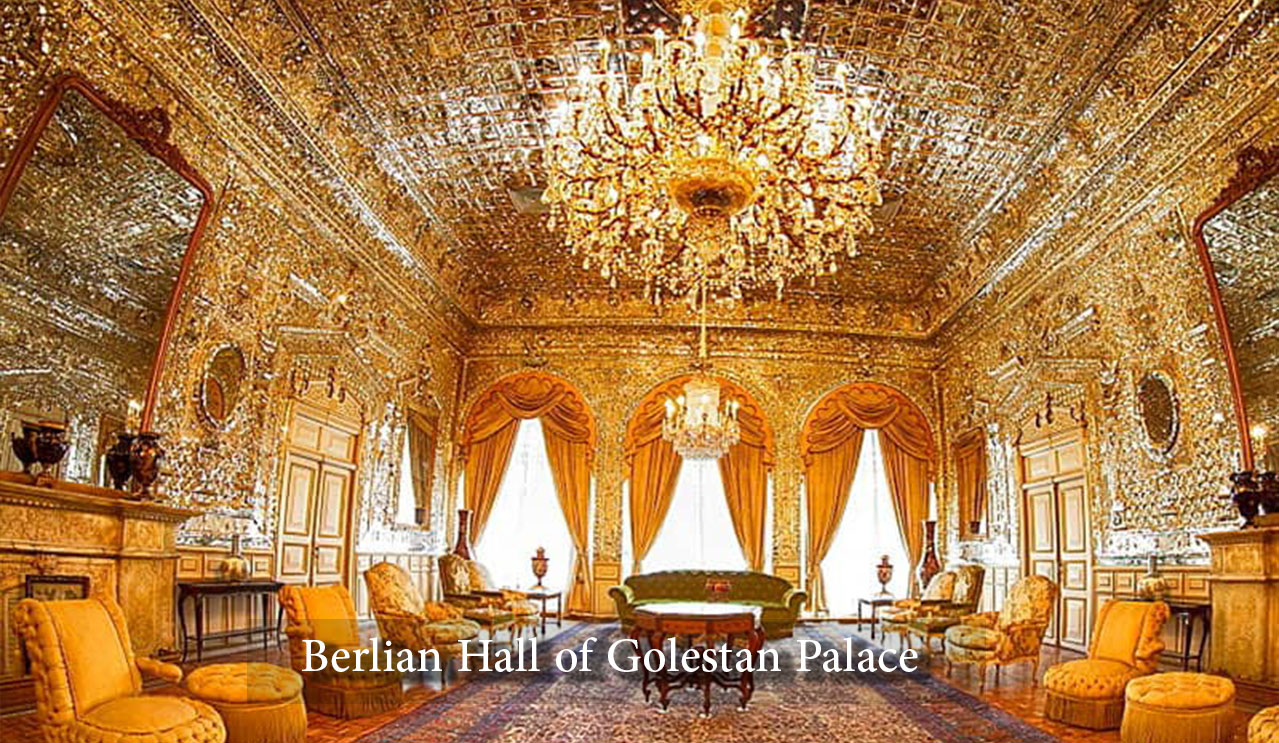
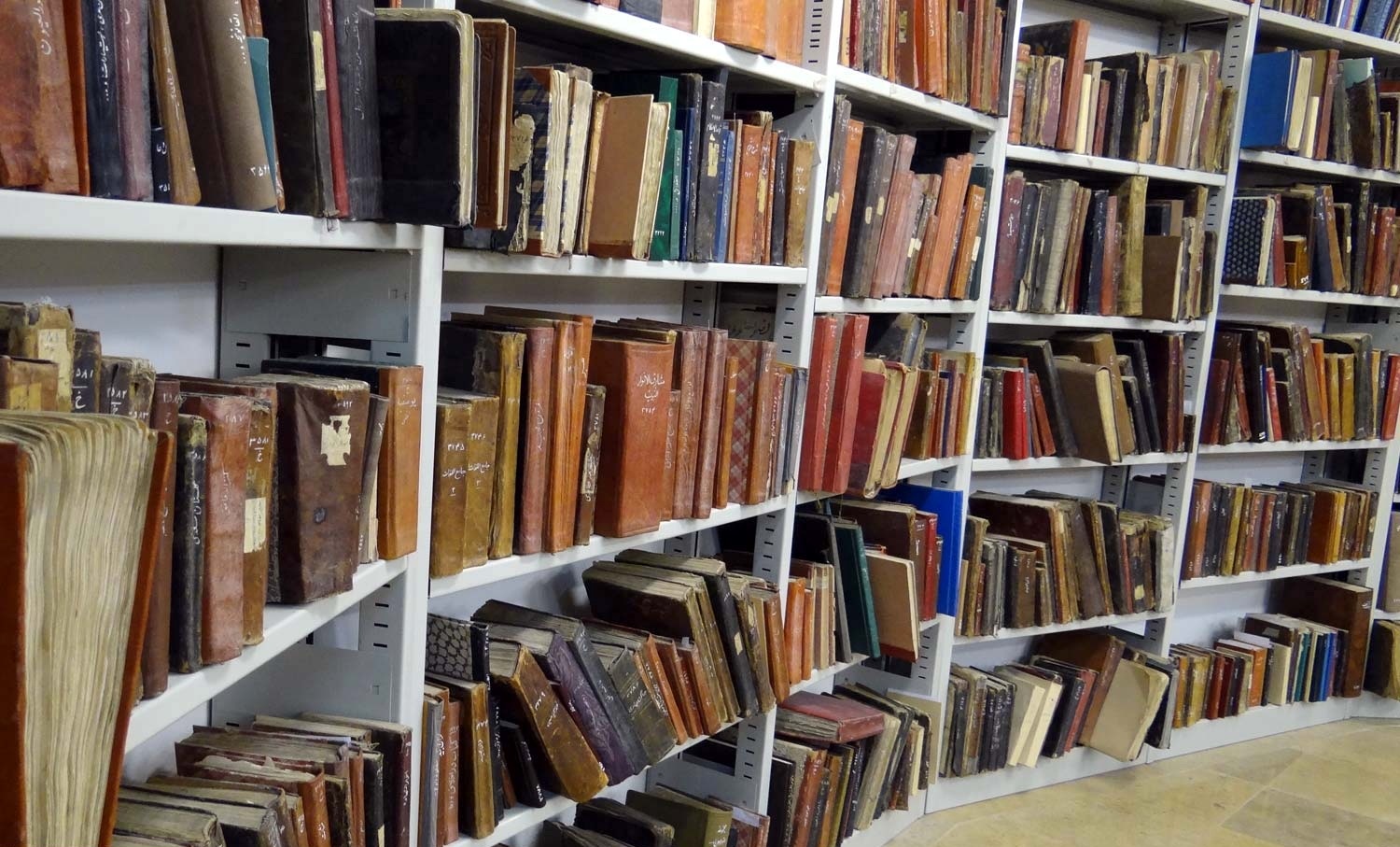
Comments